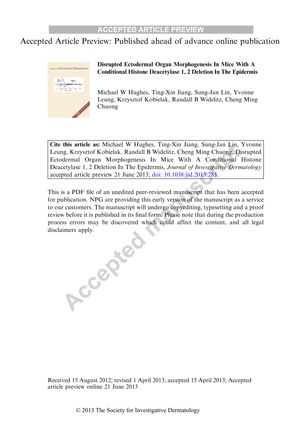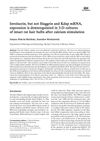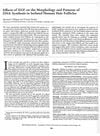Disrupted Ectodermal Organ Morphogenesis in Mice with a Conditional Histone Deacetylase 1, 2 Deletion in the Epidermis
June 2013
in “
Journal of Investigative Dermatology
”

TLDR Mice without certain skin proteins had abnormal skin and hair development.
In a 2013 study, researchers created mice with a conditional deletion of histone deacetylase 1 and 2 (HDAC1 and HDAC2) in the epidermis to examine the role of HDAC in skin and hair follicle development. The mice with HDAC1 deletion exhibited a range of skin abnormalities, including a thickened epidermis, alopecia, hair follicle and claw dystrophy, and abnormal pigmentation. The hair follicles were dystrophic and lacked mature hair fiber keratins, leading to sparse and abnormal hair growth. Mice with both HDAC1 and HDAC2 deletions showed even more severe abnormalities. The study concluded that HDAC activity is crucial for proper morphogenesis and regeneration of hair follicles and for maintaining skin homeostasis, and that its suppression can also indirectly affect pigmentation.


